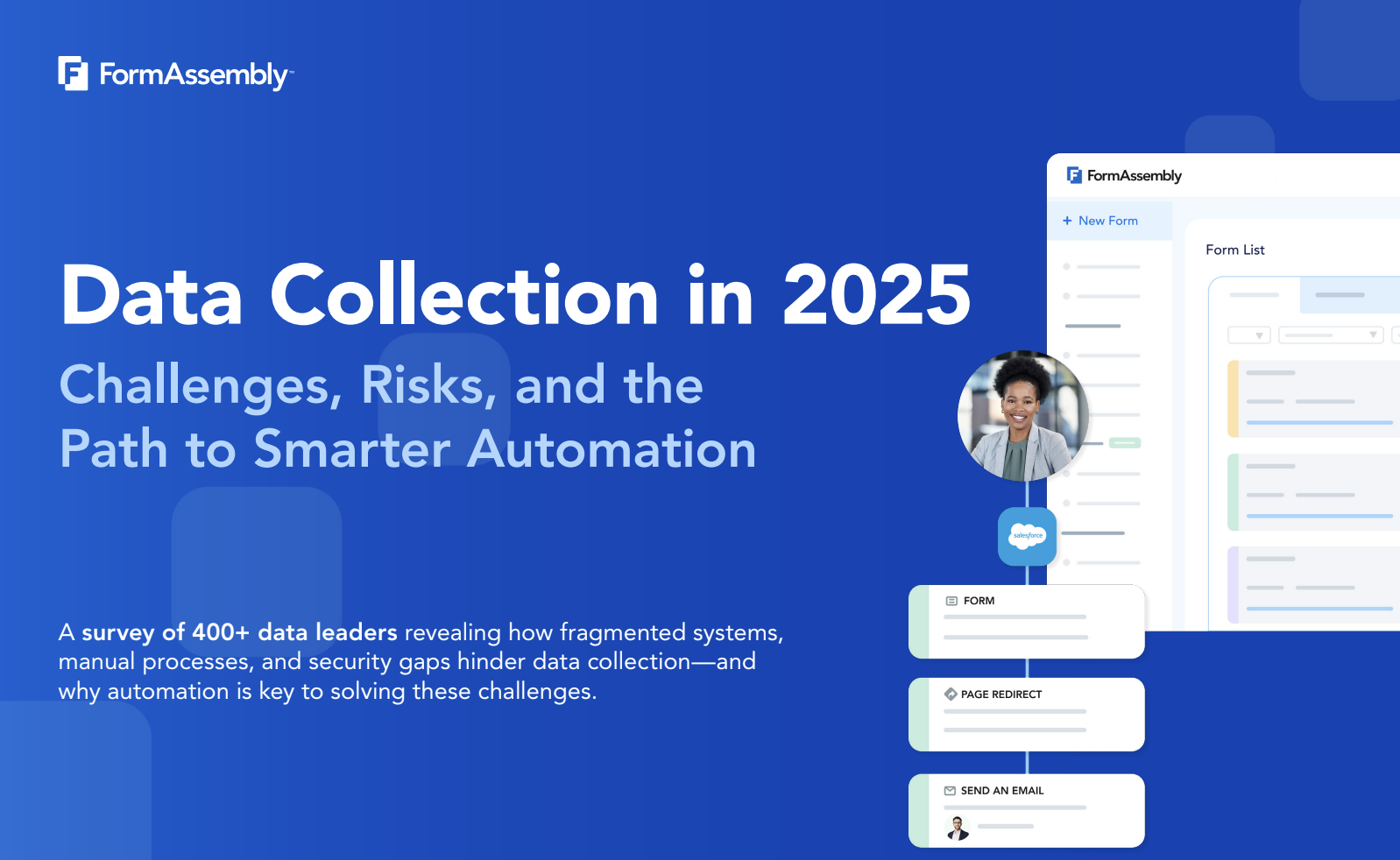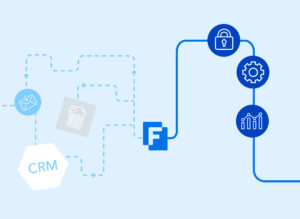The following blog was written by Jonathan Payne, Solutions Engineer at FormAssembly, and includes insights from our Data Collection in 2025 report. You can access the full findings of the report here.
The value of data hinges on trust—trust that it’s accurate, complete, and accessible when and where you need it. If your view is siloed, decision-making becomes riskier, and any gaps in visibility can skew insights. Without a clear, consistent approach to managing data across systems, organizations spend more time fixing errors than leveraging data for strategic decisions.
Our recent Data Collection in 2025 report highlights just how widespread these issues are. Among 400+ CRM, compliance, and data professionals surveyed, 80% reported ongoing issues with data quality, largely due to disconnected systems and fragmented workflows. The research underscores a growing need for organizations to rethink how they collect, align, and integrate data across platforms.
Achieving trustworthy, reliable data starts with establishing a single source of truth—a standardized system that ensures all data flows into and aligns with a central platform. If your CRM, form builders, and other collection tools all feed into Salesforce, then Salesforce should be the standard. Without this alignment, duplicate records, missing data, and extensive manual cleanup become the norm rather than the exception.
Duplicate records are one of the most common issues in fragmented data collection. To fix them, organizations first need to understand where they’re being created and why. Are records failing to merge properly? Are inconsistencies in naming conventions duplicating accounts for the same company? Are multiple locations creating separate but overlapping accounts? Applying validation rules at the data collection level ensures alignment before records hit your CRM.
But not all duplicate records should be eliminated outright. Some data structures require multiple records for the same entity, such as parent-child relationships in account management. In these cases, organizations need clear governance over naming conventions, relationship mapping, and deduplication rules to drive the right behavior while preserving necessary records.
Structural errors are another byproduct of poor system integration—often caused by human input at the data intake level. The solution? Standardization at the source. If Salesforce is your system of record, use Picklists to define inputs and ensure dropdown fields in form builders mirror these values. Enforcing consistency at the point of entry ensures that the data flowing into your CRM is accurate, uniform, and usable—not just another cleanup task for your admins.
This layer of control not only makes data more reliable, but also shifts the responsibility for accuracy to the user filling out the form, rather than IT teams retroactively correcting mistakes. By enforcing these controls upfront, organizations minimize errors, streamline updates, and maintain data integrity from the start.
Lastly, irrelevant data collection clogs databases, complicates reporting, and slows decision-making. Applying sound data minimization and retention policies ensures that organizations only collect what’s necessary, store what’s valuable, and eliminate what no longer serves a purpose. The goal isn’t just to gather data—it’s to collect the right data in the right way, so it can be used effectively.
Unlock data integrations
To address these challenges, proper integration between data collection systems is critical. As businesses rely on an expanding ecosystem of apps, automated connectivity and backend integrations have never been more essential. Here are some keys to strive for.
- Standardize data collection – employ a single source of truth across the organization.
- Prioritize interoperability in your tech stack – choose tools that seamlessly integrate with critical business systems.
- Simplify data mapping with governance – Standardize data models across systems and implement clear governance rules.

Data Collection in 2025
Disconnected systems and manual workflows are holding teams back from working efficiently and securely. Download the Data Collection in 2025 report to see how data leaders are tackling these challenges and building smarter, automated processes.

